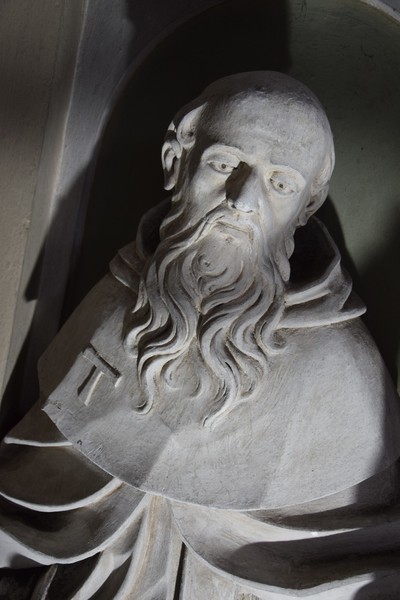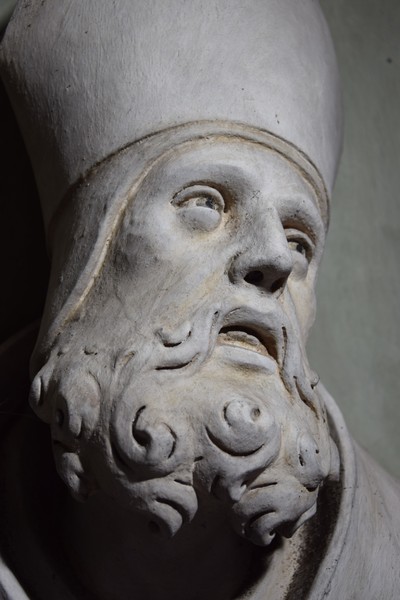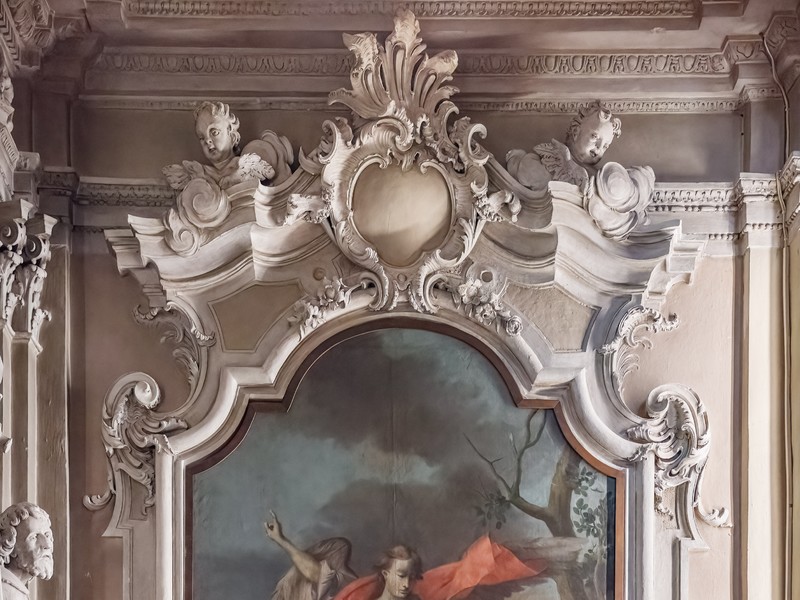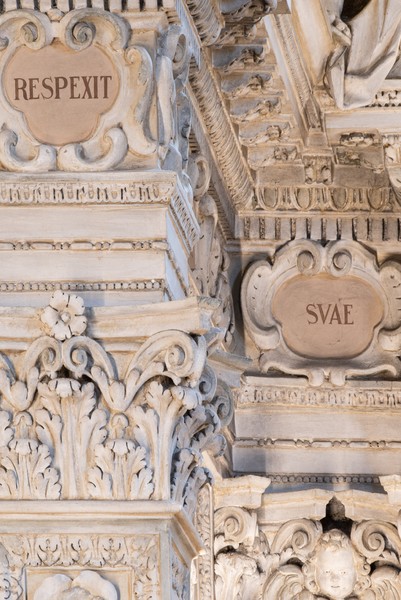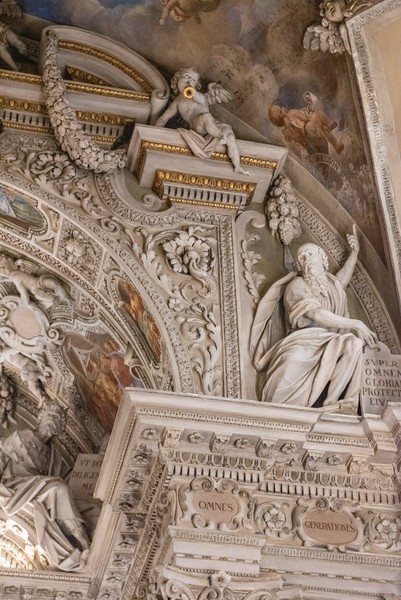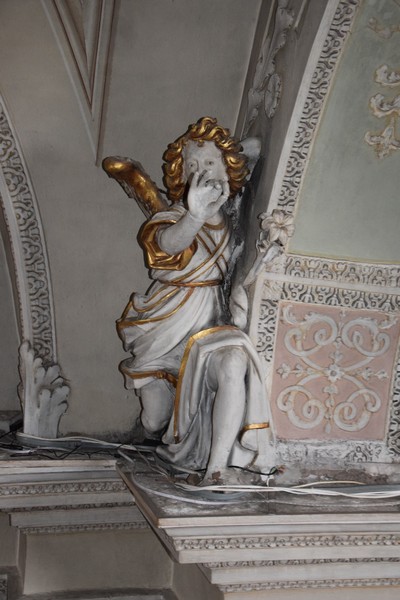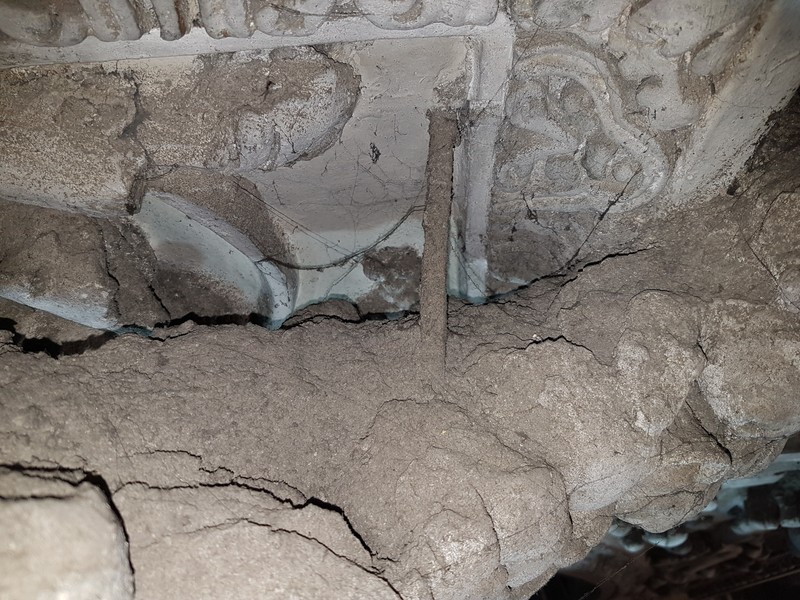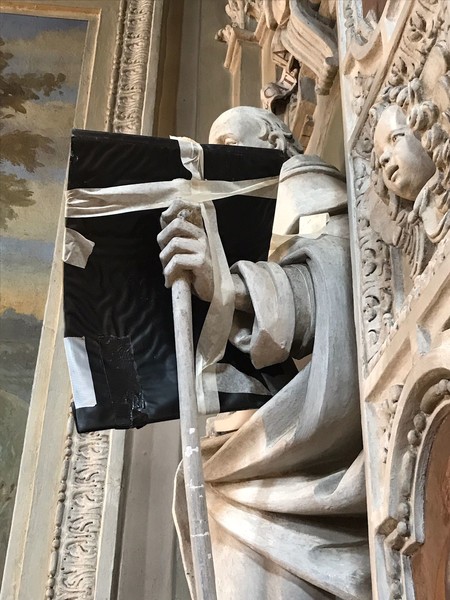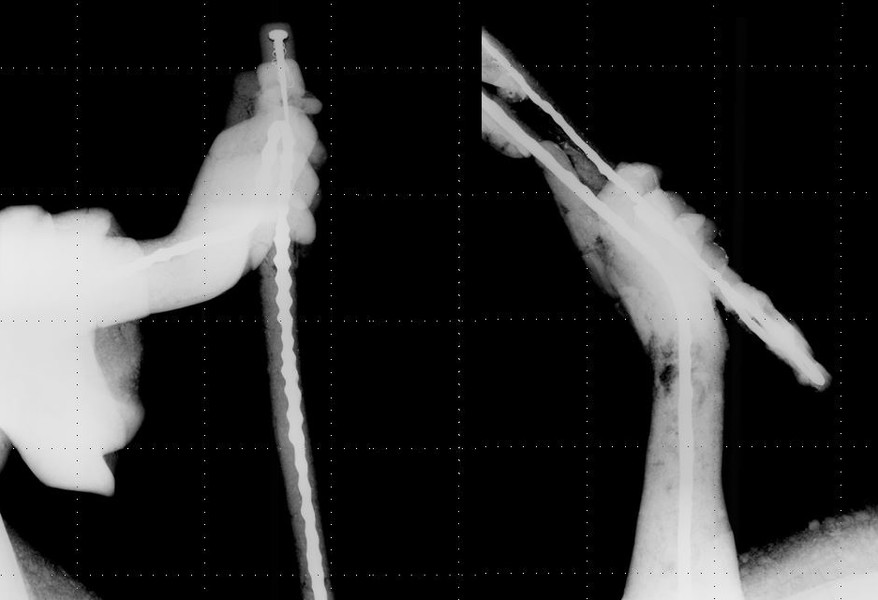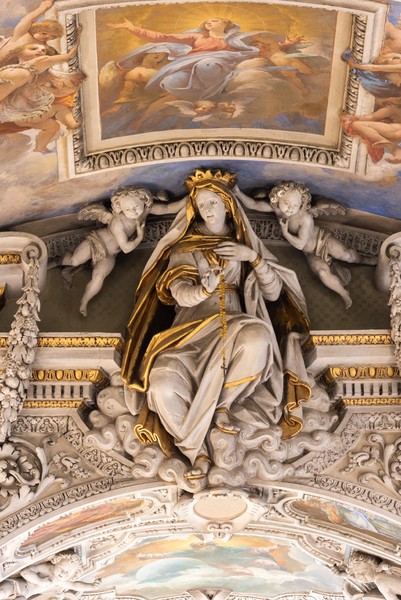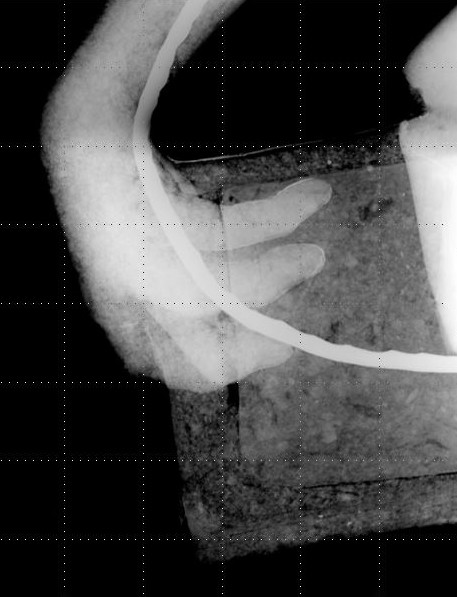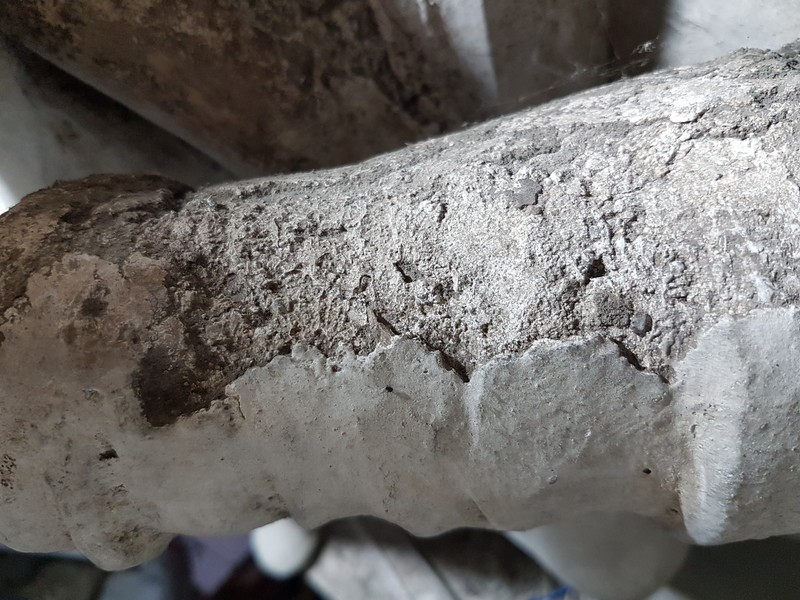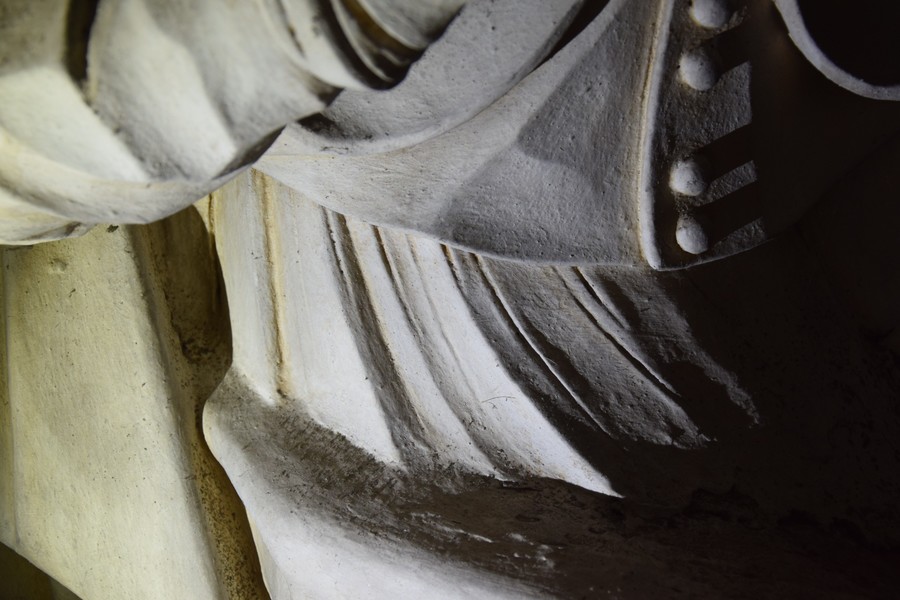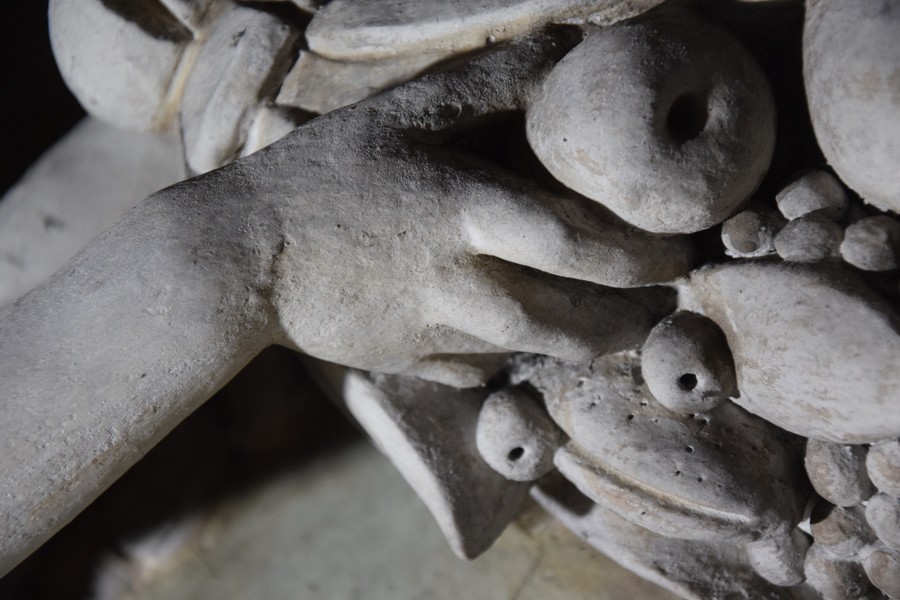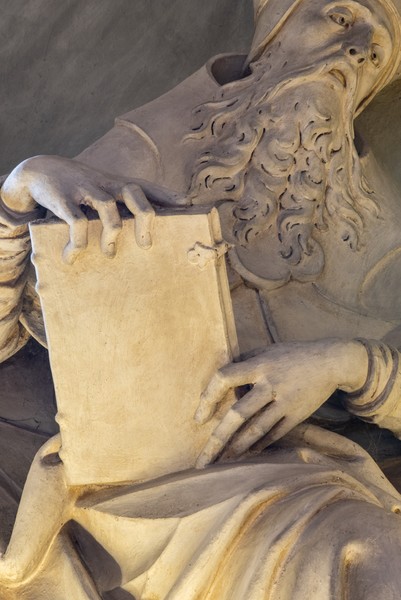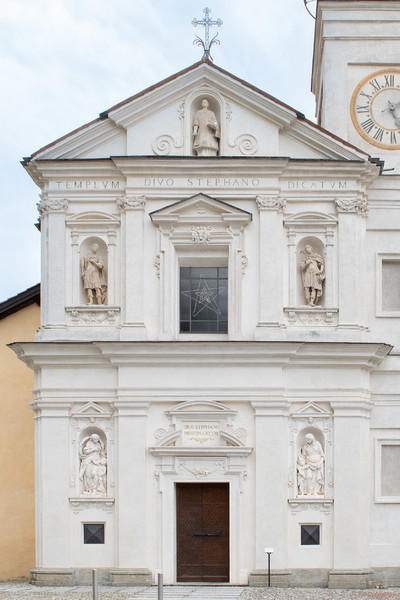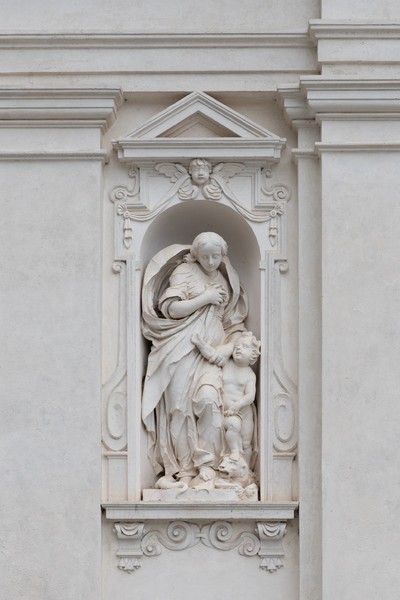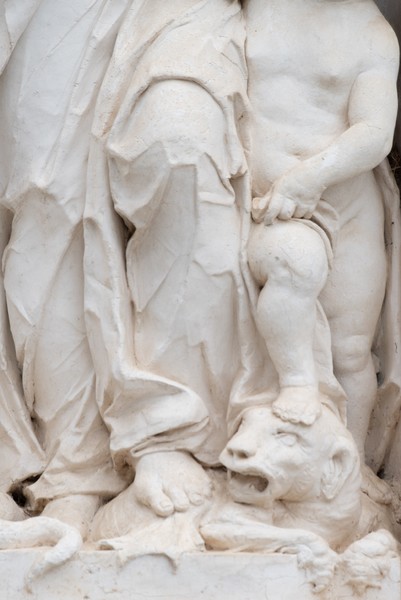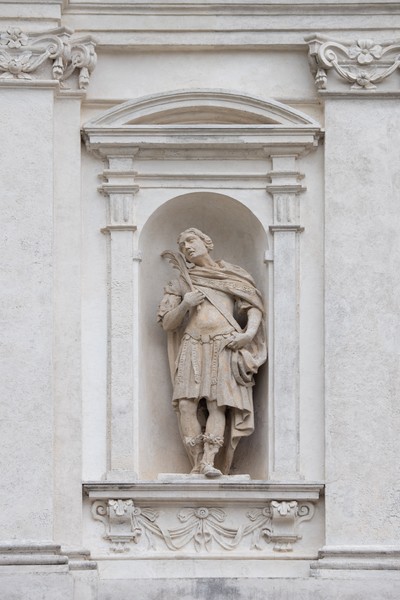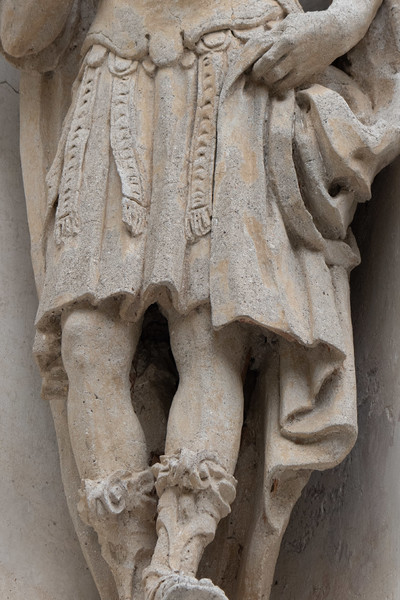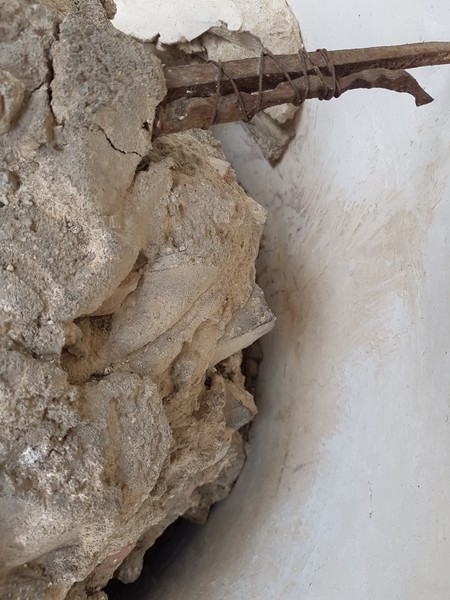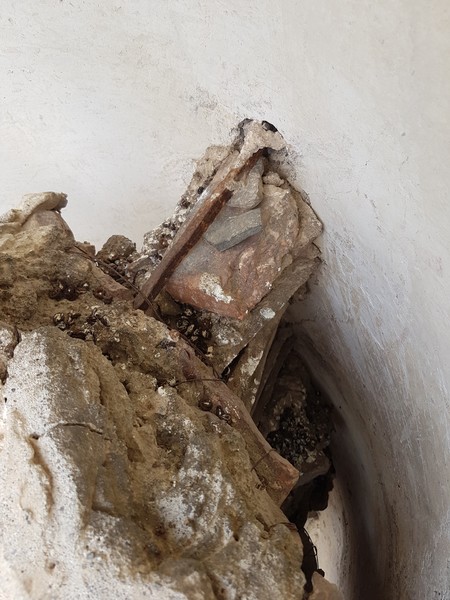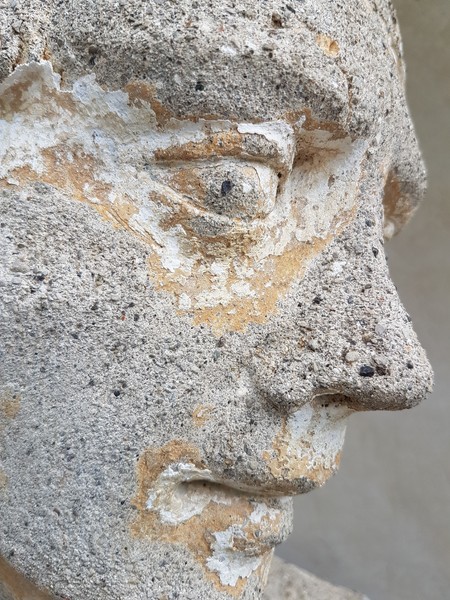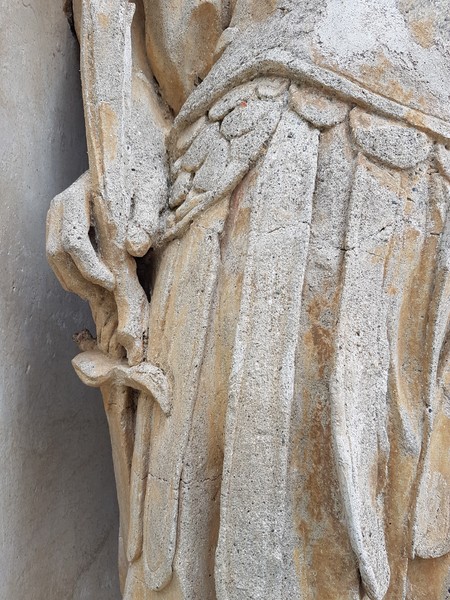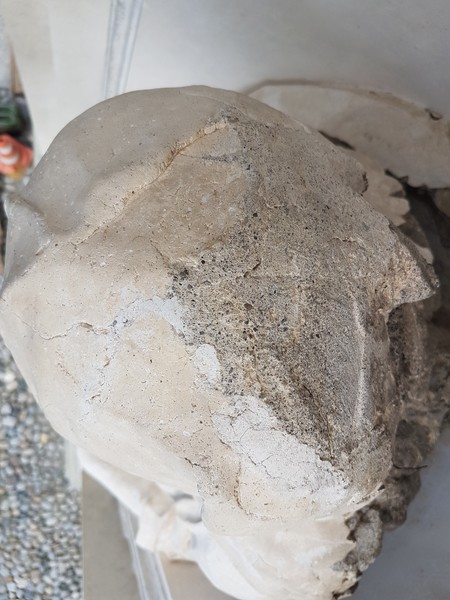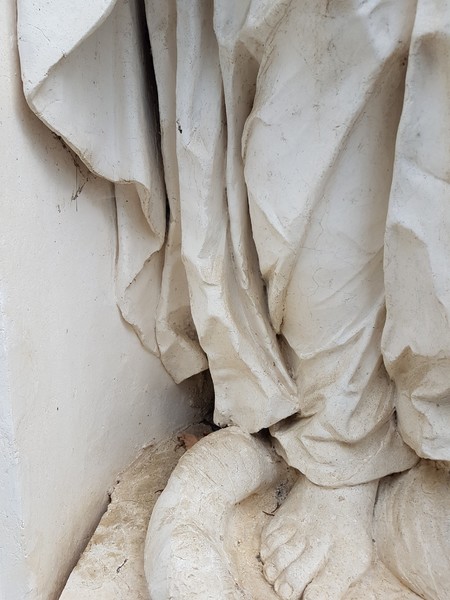Interiors
Almost all of the stucco work in the church, even those unsigned, can be attributed to the workshop of Giovanni Antonio Colomba. Although they show strong technical and formal homogeneity, such demanding works would necessarily require the collaboration of many stucco workers, and so we can understand that the execution, including that of the secondary figures, was coordinated by Colomba in exemplary manner. In fact only small differences can be noted between the appearance of the figures of the saints in the Rosary chapel and those of the doctors of the Church in the choir lunettes (Fig. 1, 2), or between the angels in the triumphal arch and those in the Rosary chapel. Some putti are less expressive, but the consistency and high quality of all the decorations are undeniable (Fig. 3). The main inconsistencies can be attributed to the heavy integrations carried out during restorations in the 1950s.
The ornamental decorations (cornices, cartouches and corbels), although rich and exuberant, have little relief, so did not require particular anchoring (Fig. 4, 5, 6). The draperies of the figures are also executed with relatively little projection, but still manage excellent rendering of the volumes. The statues in the round have a stable centre of gravity, are solidly attached to the wall and stand on broad corbels or string-course cornices (Fig. 7). Their supporting structure is mainly composed of bricks fixed in the masonry with a few iron reinforcements, observable by x-ray (Fig. 8). The positioning of these supports shows the skill of their preparation, with only a few elements arranged in simple and orderly manner. As examples, we can see the hand of St. Anthony, where with only a single rod and a broad-headed nail, the plasterer has obtained the necessary support); or, using only a bar that starts from the arm and rests on the wall with the keys, Colomba has achieved stability for the statue of St. Peter (Fig. 9, 10). Even in the figures with strong projection, such as those of the Annunciation or Our Lady of the Rosary (Fig. 11), the use of metal reinforcements is limited to the essential. Using x-rays, we are able to identify some supporting terracotta elements, particularly within the book of St. Anthony Abbot (Fig. 12). Microscopic analysis reveals the composition of the mortars: the body layer is prepared with magnesian lime, unsifted sand and a small amount of gypsum (Fig. 13); the finishing layer, of varying thickness, using magnesian lime, gypsum and very little sand. The modelling was skilfully developed using wooden and metal spatulas. The marks from these tools are now difficult to recognise, due in part to the thick layers of paint hiding the original surface (Fig. 14)), but also the way the surface of the stucco was smoothed: perhaps by finishing with a brush or wet rag (Fig. 15). The faces and draperies have smooth surfaces, the hair and beards are executed in summary manner, only slightly incised; the wing feathers are marked by short strokes of the spatula (Fig. 16). The modelled surfaces are meticulously detailed even in areas that are hardly visible, such as in the trimmings of the robes.
The stucco frame on the right wall of the Rosary Chapel, executed by an unknown stuccatore at a later date (Fig. 3), shows typical working methods and formal and stylistic characteristics of the early 1700s, with a modelled surface with little projection and loose, exuberant decorative elements.
Facciata
The authors of the stuccoes on the exterior façade, dated 1661, are unknown, but the stylistic differences between the elegant female sculptures in the lower order and the more rigid ones of the saints in the upper niches are evident (Fig. 17, 18, 19, 20, 21). Differences can also be found in the execution techniques.
The supporting structures consist of bricks, assembled in disordered manner, with the addition of roof tiles, pieces of wood, iron wires and brackets, all bound with a thick, coarse mortar (Fig. 22, 23).
In the sculptures of the upper registers, the forms are obtained using a body mortar with coarse aggregates, while the final layer is very thin, almost a simple brush-applied plaster wash (Fig. 24). The overlapping of the layers is particularly evident because the surface finish has been eroded by rain and is now largely lost, preserved only in the less exposed parts of the drapery (Fig. 25).
In contrast, the finish of the two lower female figures consists of a homogenous and compact layer of considerable thickness, as can be seen on the back of the figures (Fig. 26). Despite the dense network of surface cracks and the effects of erosion, the material is cohesive and compact (Fig. 27, 28). The passage of water has affected the surface smoothness, roughening it slightly and revealing the fine grain size of the aggregates, composed exclusively of marble dust, but has not altered the stucco’s resistance to atmospheric agents nor the finishing details. All of the sculptures have an amber colouring, lighter and transparent in the lower figures, thicker and more opaque in the upper ones, perhaps applied as a protective layer or to make these statues look as if they were made of stone.
















